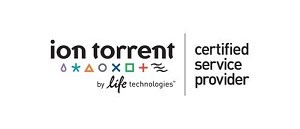Neurofibromatosis refers to a group of distinct disorders, generally causing tumors of the nervous system. The tumors begin to appear in the cells making up the nerves and the myelin sheath (the thin membrane that surrounds and protects the nerves) and the type of tumor that develops depends on the type of cells involved.
The group includes neurofibromatosis Type 1 (NF1, also called von Recklinghaus disease), neurofibromatosis type 2 (NF2) and a type that was once considered to be a variation of NF2, but is now called schwannomatosis, all inherited as autosomal dominant genetic diseases.
The most common tumors associated with NF1 are neurofibromas (tumors of peripheral nerves), while schwannomas (tumors involving schwann cells, which help form the myelin sheath) are more common in NF2 and schwannomatosis. Most tumors are benign, although occasionally they may become malignant.
NF1 (OMIM 162200) is the most common form of neurofibromatosis, occurring with a frequency of ~1 in 3000-4000 and is due to dominant mutations in the NF1 gene (OMIM 613113). The typical symptoms are skin abnormalities, such as café-au-lait spots, neurofibromas, Lisch nodules and freckles in the armpits and the groin, often noticeable at birth or shortly afterwards but typically up to the age of 10 years. Although many patients inherit the disease from a parent, between 30 to 50% of cases are the result of a new genetic mutation (de novo), not inherited from a parent; however, the patient is then at 50% risk of transmitting the disease to his offspring.
NF2 (OMIM 10100) is relatively rare, with an incidence of about 1 in 25,000. About 50% of patients have inherited NF2 gene (OMIM 607379) mutations from a parent, while the remainder is the result of a new mutation (de novo), not inherited from a parent; however, the patient is then at 50% risk of transmitting the disease to his offspring. The characteristic findings in NF2 are schwannomas of multiple cranial and spinal nerves, particularly the vestibular nerve, as well as other tumors such as meningiomas and ependymomas. Although individuals with NF2 may exhibit neurofibromas which may appear like small flaps of skin, they rarely have the typical café-au-lait spots of NF1. Individuals with NF2 are at risk for developing other types of tumors of the nervous system, such as ependymomas, gliomas and meningiomas (tumors that grow along the protective layers surrounding the brain and spinal cord).
We perform DNA sequence analysis, via Next Generation Sequencing (NGS) on a Genome Analyzer – Ion Proton platform, of all exons and intron-exon junctions/splice sites of the NF1 and NF2 genes, allowing us to detect, through the use of specially developed bioinformatics tools, >95% of all pathogenic point mutations of the genes.
Where possible and/or necessary, we carry out additional MLPA analysis in order to detect deletions/duplications of the genes (please consult the final test report).
The test is highly sensitive and complex, so it is necessary that the results are assessed by a specialized team of clinical and molecular geneticists, in order to ensure safe and reliable testing.
Proper clinical genetic assessment and genetic counseling, both before and after testing, is essential in order to determine the optimum testing strategy and also to communicate properly the concepts of pathological and normal.

